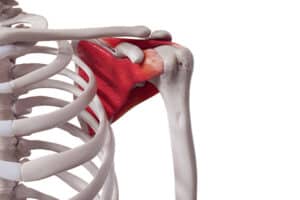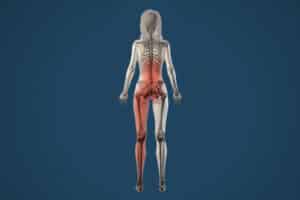Benign Paroxysmal Positional Vertigo (BPPV) is a common vestibular disorder characterized by brief episodes of dizziness and vertigo triggered by specific head movements. It occurs when small calcium carbonate crystals within the inner ear, called otoliths, become dislodged and move into the semicircular canals. Fortunately, physiotherapy has emerged as an effective treatment option for BPPV, offering patients relief from its debilitating symptoms. In this blog post, we will explore the role of physiotherapy in treating BPPV and how it can help patients regain their balance and quality of life.
Understanding BPPV and its Symptoms
BPPV can cause a range of distressing symptoms, including spinning sensations (vertigo), loss of balance, nausea, and a general feeling of unsteadiness. These symptoms can significantly impact a person’s ability to perform daily activities and negatively affect their overall well-being.
The Role of Physiotherapy in BPPV Treatment
Physiotherapy plays a crucial role in the diagnosis and treatment of BPPV. It involves specific maneuvers and exercises designed to reposition the displaced otoliths within the inner ear, relieving symptoms and restoring normal balance function. There are several techniques used in physiotherapy for BPPV treatment.
Epley Manoeuvre: The Epley maneuver is a series of head and body movements that aim to move the dislodged otoliths out of the affected semicircular canal. The procedure involves a carefully controlled sequence of positions, with each position held for a brief period. The Epley maneuver helps to reposition the crystals to a less sensitive part of the inner ear, alleviating symptoms of vertigo and dizziness.
Semont Manoeuvre: Like the Epley maneuver, the Semont maneuver is a repositioning technique that involves a series of rapid head movements. The goal is to dislodge the otoliths and guide them out of the affected semicircular canal. This maneuver can provide quick relief from vertigo symptoms in many patients.
Barbeque Roll Maneuver: It is a simple treatment that involves you turning your head in a series of movements. These precise movements will gently remove the crystals from the semi-circular canals and guide them back to their rightful position, effectively alleviating the distressing symptoms of vertigo.
Gufoni Manoeuver: This technique involves swiftly repositioning the patient, transitioning them from a seated posture to the affected side, maintaining this stance for approximately 1 to 2 minutes until the induced vision improves. Subsequently, the patient’s head is promptly rotated 45° upward and held in this orientation for an additional 2 minutes. Finally, the patient is allowed to return to an upright position.
All maneuvers should be performed by a trained physiotherapist who can guide patients through precise movements and ensure their safety and effectiveness.
The Role of Vestibular Rehabilitation Exercise
Vestibular rehabilitation exercises (VRE) are a form of physical therapy designed to help individuals with vestibular system disorders or dysfunctions. The vestibular system is responsible for providing our brain with information about our body’s position, balance, and spatial orientation. When this system is impaired, it can lead to symptoms such as dizziness, vertigo, unsteadiness, and problems with coordination.
The primary goal of vestibular rehabilitation exercises is to promote compensation and adaptation within the central nervous system, allowing individuals to improve their balance and reduce dizziness symptoms. The exercises are customized to the specific needs of each individual.
Benefits of Physiotherapy for BPPV
Physiotherapy offers several advantages in the management of BPPV:
Non-invasive: Physiotherapy is a non-surgical and non-pharmacological approach to treating BPPV, making it a safe and low-risk option for patients.
Cost-effective: Physiotherapy is generally more cost-effective than other treatment options like medications or surgery, making it accessible to a wider range of individuals.
Personalized approach: Physiotherapy for BPPV is tailored to each patient’s specific needs. A physiotherapist will assess the type and severity of BPPV and customize the treatment plan accordingly.
Immediate symptom relief: In many cases, patients experience immediate relief from vertigo and dizziness after undergoing physiotherapy maneuvers. This quick improvement can greatly enhance a patient’s quality of life and functional abilities.
Long-term benefits: Physiotherapy not only alleviates the immediate symptoms of BPPV but also helps to prevent recurrences. Through repositioning maneuvers and exercises, patients can learn how to manage their symptoms and minimize the impact of BPPV on their daily lives.
Physiotherapy plays a crucial role in the effective management of BPPV
By employing specific repositioning maneuvers like the Epley and Semont, physiotherapists can successfully treat BPPV and provide relief to patients suffering from its debilitating symptoms. The non-invasive nature, cost-effectiveness, and personalized approach of physiotherapy make it a preferred choice for many individuals dealing with BPPV.
It is important to note that physiotherapy for BPPV should always be conducted by a trained professional. A physiotherapist with expertise in vestibular rehabilitation can accurately diagnose BPPV and determine the appropriate maneuvers and exercises based on the individual’s condition. They will guide patients through the process, ensuring that the maneuvers are performed correctly and safely.
Exercises Can Help Improve BPPV
In addition to repositioning maneuvers, physiotherapy may also include exercises to improve balance and stability. These exercises focus on strengthening the muscles involved in maintaining posture and coordinating movements, thereby enhancing the patient’s overall balance, and reducing the risk of falls.
Education and Guidance
Physiotherapists can also provide valuable education and guidance on lifestyle modifications and self-management techniques. They can educate patients about strategies to minimize triggers that exacerbate BPPV symptoms and provide tips for coping with any residual symptoms that may persist after treatment.
Physiotherapy has shown remarkable success in treating BPPV, allowing patients to regain their confidence, independence, and quality of life. Through targeted maneuvers, exercises, and education, physiotherapists empower individuals to actively manage their condition and reduce the impact of BPPV on their daily activities.
Think You Might Have BPPV?
If you suspect you have BPPV or have been diagnosed with the condition, it is highly recommended to seek professional physiotherapy. A qualified physiotherapist will perform a comprehensive assessment and develop an individualized treatment plan to address your specific needs.
Remember, BPPV is a treatable condition, and physiotherapy can be instrumental in alleviating its symptoms and helping you get back to living a balanced life. Consult a physiotherapist experienced in vestibular rehabilitation and take the first step towards a healthier, more stable future.
Disclaimer: The information provided in this blog post is for educational purposes only and should not replace professional medical advice. Always consult a healthcare professional for accurate diagnosis and appropriate treatment options for your specific condition.








